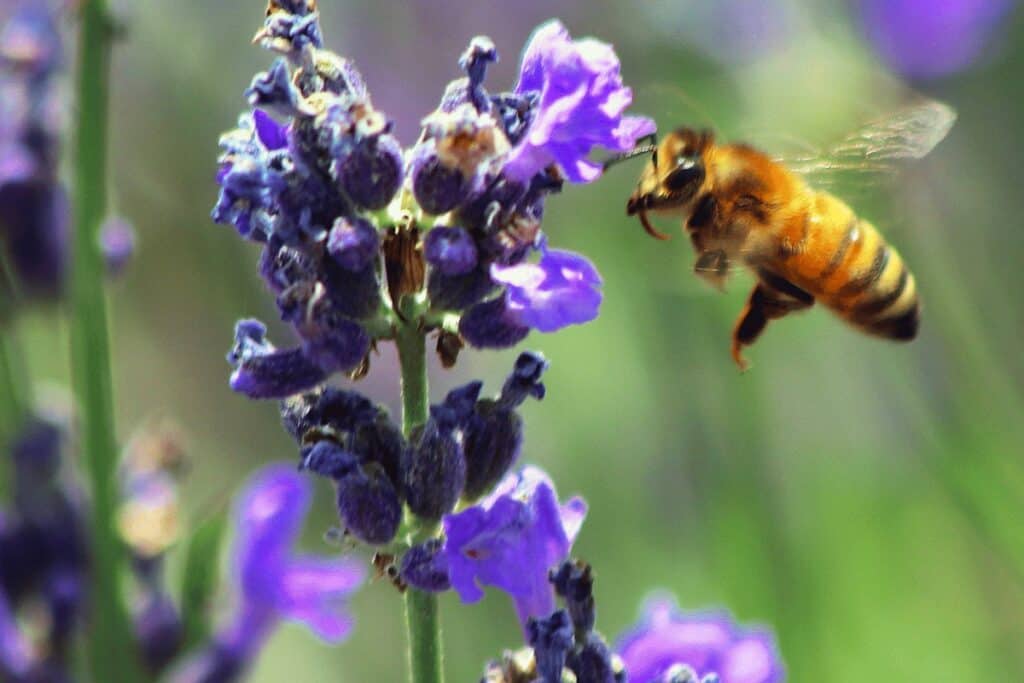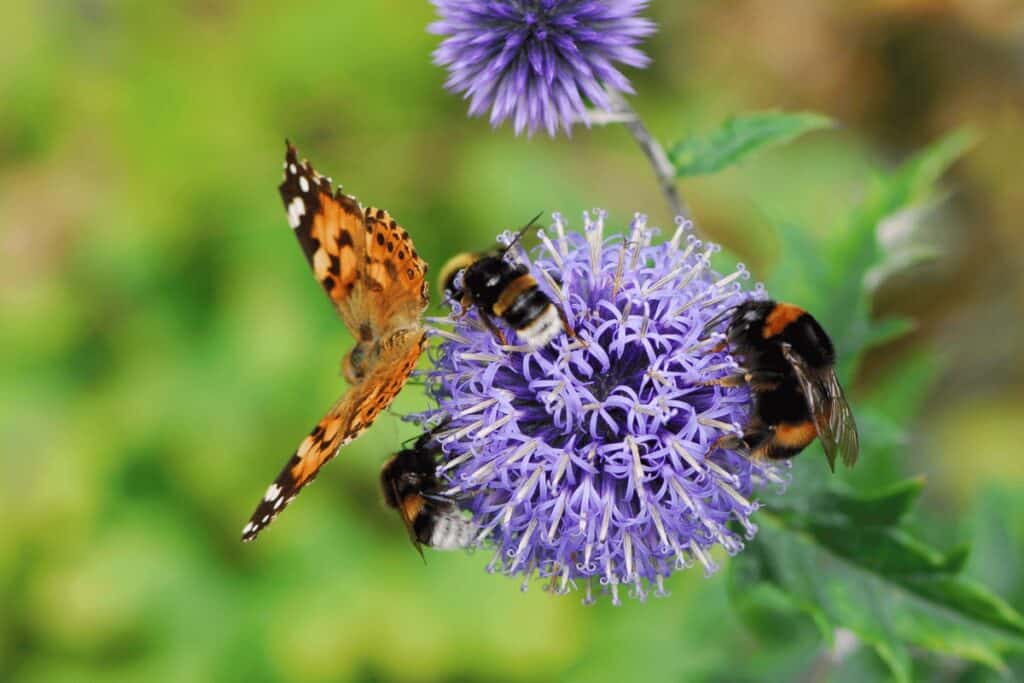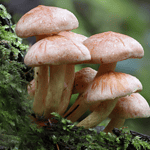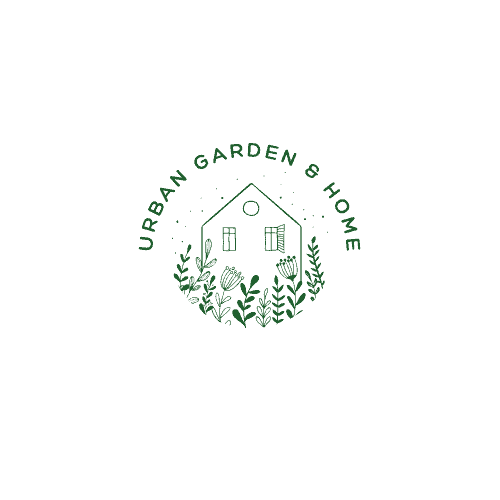Introduction ~ What are Pollinator-Friendly Plants
Are you interested in creating a vibrant and inviting space for pollinators in your container garden? Pollinators such as bees, butterflies, and hummingbirds play a crucial role in enhancing fruit and vegetable production. Even if you have limited space, you can still contribute to the well-being of pollinators by planting nectar-filled flowers in containers.
In this article What are Pollinator-Friendly Plants we will explore various pollinator-friendly plants that are perfect for container gardening. Let’s dive in and discover how you can create a beautiful and pollinator-friendly oasis right on your balcony or porch.
Include Bee-Friendly Balcony Plants

To attract butterflies and bees to your container garden, it’s important to include plants with plenty of nectar-rich flowers [1]. Creating a banquet of blue, pink, and red cornflowers along with Spanish lavender, blanket flower, and baby’s breath will provide a perfect feast for bees and other fascinating insects. The more nectar-filled plants you have in your container, the more you’ll be able to enjoy the presence of these delightful pollinators.
Cornflower Colorful Plants Seeds

50pcs Organic Centaurea Cyanus Annual Meadows Herb Flower Easy to Grow Seeds for Planting Garden Yard Outdoor
About this item
- 1. Cornflower – These easy-to-grow flower seeds are great for beginning gardeners or children’s gardens. The flower seeds are larger making them easy to handle, and they germinate readily to create this fun Polka Dot mix of colors.
- 2. The colors in this mix include white, blue, rose, and lavender. Plan on mass planting for a wonderful display of color!
- 3. Cornflowers, also commonly called Bachelor’s Buttons, are wonderful cut flowers as well. The blooms dry nicely for dried everlasting arrangements. These wildflowers are very rewarding flowers to grow from flower seed!
- 4. Like many wildflowers, the plants prefer full sun in mild climates and partial shade in the hottest regions. They tolerate a wide variety of soil as long as it drains well.
- 5. Cornflowers perform the best in mild climates with moderate water, but they can withstand drought. Bachelor’s Button flowers are very attractive to both bees and butterflies, but deer leave the plants alone. Cornflowers are annuals, but they can self-sow, dropping their own flower seeds to provide next year’s display.
Plant Tube-Shaped Blooming Perennials That Attract Hummingbirds

If you wish to attract hummingbirds to your container garden, consider planting a vibrant mix of red, orange, and bright pink tube-shaped blooms [1]. Hummingbirds are naturally drawn to these tubular flowers and will flock to your garden for their nectar. Salvia ‘Mystic Spires,’ red and purple verbena, and coral and raspberry autumn sage are excellent choices that will add a pop of inviting color to your landscape while attracting these charming birds [1].
Choose Brightly Colored Container Plants for Butterflies
To bring butterflies closer to your living space, create a butterfly container garden filled with long-blooming, daisy-shaped flowers [1]. Delphinium, ‘Queen Victoria’ salvia, red verbena, and coreopsis are butterfly favorites that provide both food and respite for their fluttering wings. Brightly colored flowers in shades of red, orange, yellow, pink, purple, and blue are especially attractive to butterflies. Ensure there are “landing pads,” such as coreopsis, where butterflies can perch while they enjoy their nectar [1].
Provide Host Plants for Butterflies
To boost butterfly populations, it is essential to provide “host” plants that offer food for caterpillars [1]. Certain herbs, such as fennel and dill, act as magnets for egg-laying females of many butterfly species. By including these host plants in your container garden, you can support the complete life cycle of butterflies. Repurposed galvanized washtubs with drainage holes can make excellent containers for these plants [1].
Create a Habitat with Native Plants
Incorporating native plants into your container garden is a fantastic way to attract and support a wide range of pollinators. Native plants have evolved to thrive in specific regions and have established strong ecological relationships with local pollinators. Research the native plants that are well-suited for your area and incorporate them into your container garden. This will create a habitat that provides the necessary food and shelter for pollinators [3].
Select Plants with Varied Blooming Periods
To ensure a continuous supply of nectar throughout the growing season, choose plants with varied blooming periods. By incorporating early, mid, and late-season bloomers in your container garden, you can provide a consistent source of food for pollinators [2]. This will attract and support pollinators from spring to fall, enhancing the health and productivity of your garden.
Consider Plant Height and Habits for What are Pollinator-Friendly Plants
When selecting plants for your container garden, it’s important to consider their height and habits. Choose a variety of single-petal plants with different heights and growth habits. This diversity will create an attractive visual display while ensuring that the flowers’ blooms extend from spring to fall. Additionally, it will provide pollinators with a range of options for feeding and nesting, contributing to the overall vitality of your garden [1].
Opt for Organic Gardening Practices for What are Pollinator-Friendly Plants
To create a truly pollinator-friendly container garden, opt for organic gardening practices. Avoid using chemical pesticides and fertilizers that can harm pollinators. Instead, focus on natural pest control methods and enrich your soil with organic amendments. By adopting sustainable gardening practices, you are ensuring the well-being of both pollinators and the environment.
Provide Water Sourcesfor What are Pollinator-Friendly Plants
In addition to nectar-rich flowers, pollinators also need water sources to thrive. Place shallow dishes or saucers filled with clean water in your container garden. Add pebbles or stones to create landing spots for pollinators to safely access the water. Remember to change the water regularly to prevent the breeding of mosquitoes.
Regular Maintenance and Monitoring for What are Pollinator-Friendly Plants
To ensure the success of your pollinator-friendly container garden, regular maintenance and monitoring are essential. Remove faded flowers to encourage continuous blooming and deadhead any spent blossoms. Monitor the health of your plants and take appropriate measures to address any pests or diseases that may arise. Regularly observe the presence of pollinators and make adjustments to your garden as needed to enhance their experience.
Conclusion ~ What Are Pollinator-Friendly Plants
Creating a pollinator-friendly container garden is a rewarding and environmentally conscious endeavor. By carefully selecting a variety of nectar-rich flowers, considering the needs of different pollinators, and implementing sustainable gardening practices, you can create a vibrant haven for bees, butterflies, and hummingbirds. These tiny creatures will not only enhance the beauty of your garden but also play a crucial role in increasing fruit and vegetable production. Embrace the joy of container gardening while making a positive impact on our ecosystem.
FAQs
1. How can I attract bees to my container garden?
To attract bees to your container garden, include plants with plenty of nectar-rich flowers, such as cornflowers, Spanish lavender, and blanket flower. Creating a diverse and vibrant collection of these plants will entice bees to visit and pollinate your garden.
2. Can I attract hummingbirds to my balcony with container plants?
Yes, you can attract hummingbirds to your balcony by planting tube-shaped blooming perennials like Salvia ‘Mystic Spires’, verbena, and autumn sage. These vibrant flowers will not only add a pop of color to your balcony but also serve as a delightful feeding spot for hummingbirds.
3. What are some native pollinator-friendly plants for container gardening?
Native plants are excellent choices for pollinator-friendly container gardening. Some popular options include milkweed, lavender, aster, coneflower, and yarrow. Research native plants suitable for your region to attract local pollinators.
4. How often should I water my pollinator-friendly container garden?
The watering needs of your pollinator-friendly container garden will depend on various factors such as plant species, weather conditions, and container size. As a general guideline, check the moisture level of the soil regularly and water when the top inch feels dry. Adjust the frequency and amount of watering based on the specific needs of your plants.
5. What are some signs that pollinators are visiting my container garden?
Some signs that pollinators are visiting your container garden include the presence of bees, butterflies, or hummingbirds around the flowers, visible pollen on their bodies, and the sound of buzzing wings. Observing these indicators indicates that your garden is attracting and supporting pollinators.
Latest Post
- What Types of Lettuces Can You Grow?

- How to Plant Onion Seeds for Maximum Germination

- How to Plant Parsnip Seeds for Maximum Germination

- How to Plant Mushroom Seeds for Maximum Germination

- How to Plant Lettuce Seeds for Maximum Germination

- How to Plant Kale Seeds: A Step-by-Step Guide to Maximum Germination Success!





